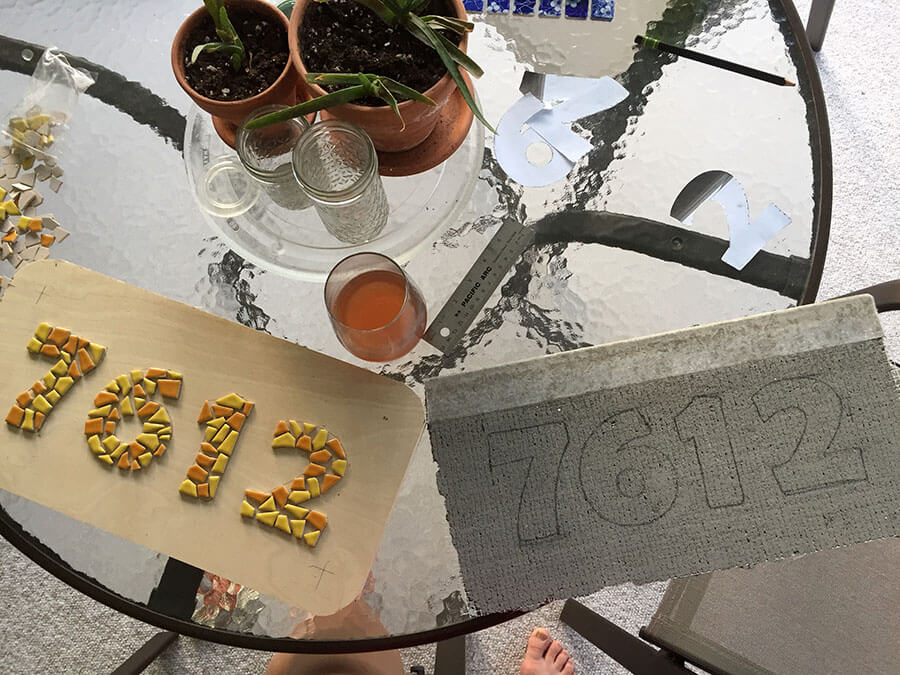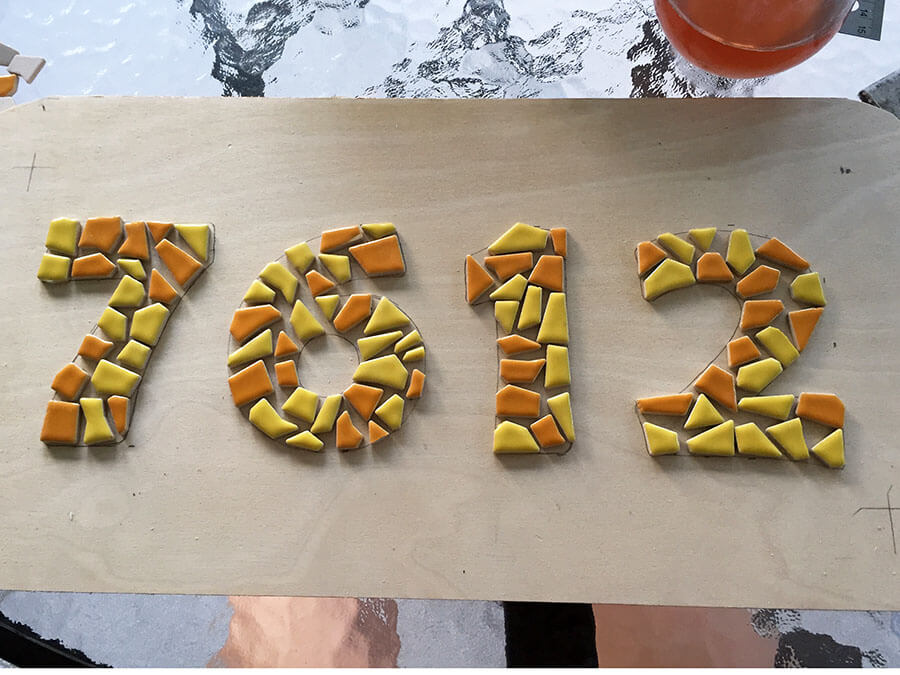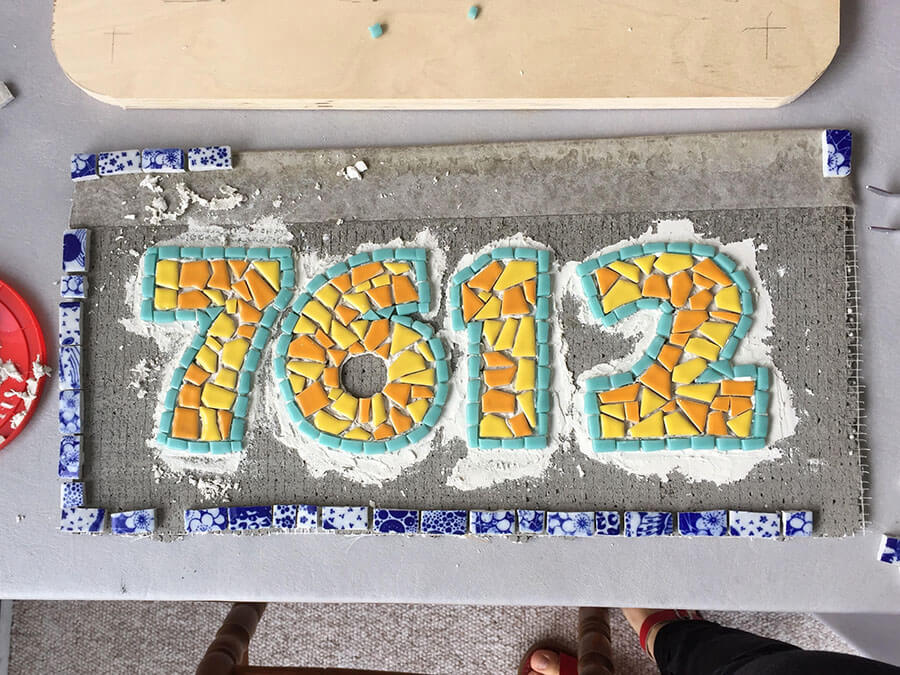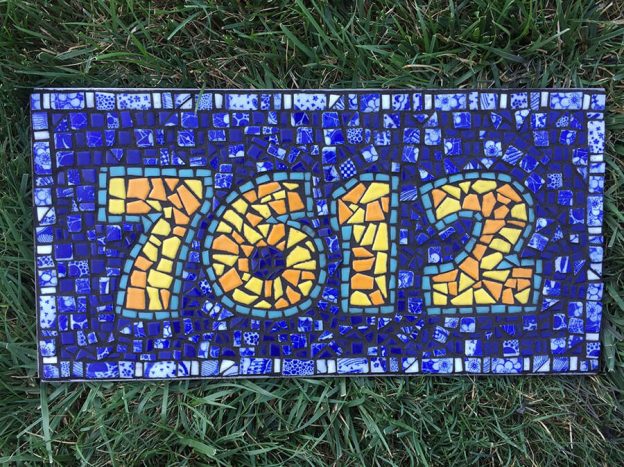You can make mosaic street numbers and signs using a grid, but mosaics made from irregular shapes of non-gridded tesserae are more interesting, especially if you use concentric andamento for the background surrounding the figures.
Sara Sommers emailed us some pictures of her mosaic street number plaque, and it is made from cut pieces of tile in strongly contrasting colors. It is definitely worth checking out if you are thinking of making a piece with large mosaic letters or numerals.
Contrasting Colors
For starters, Sara uses strong color contrast between her numerals and background, which is critical for making eye-catching art. She also uses multiple related colors and variegated patterns instead of solid monochromatic color fields.
Variegated Colors & Patterns
The numerals are made from yellow and orange colors of our Irregular Glazed Ceramic Tile, and the background is made from our china-patterned Glazed Porcelain Tile mixed with some of our Morjo™ 12mm Recycled Glass Tile in dark midnight blue. For added visual interest, the numerals are outlined in cut pieces of Morjo™ in a lighter blue color.
Outlines

Sara started by drawing some outlines of the numerals she wanted to mosaic. You could use stencils for this purpose or even the numerals and letters sold in craft stores as improvised stencils and then return them.
Consistent Spacing

In the picture above, notice the extra-large spaces between some of the tiles in the numeral “2” and compare that to the revised numeral “2” in the picture below.
While grouting can “pull things together” and help make separate pieces of tile represent a solid figure, it can’t help inconsistent spacing of tile. In fact, grouting usually makes inconsistent spacing look worse. If you have larger gaps in places, those will stick out like a sore thumb when they are filled with concrete, especially if they are in a focal point, such as a face or the eyes of a face.
Appropriate Backer for Outdoors

Since this mosaic was going to be mounted outside, it was critical that it be made on a backer that wasn’t vulnerable to moisture and humidity, instead of plywood, which eventually warps and deteriorates outside. Also, thinset mortar is used instead of mosaic adhesive to mount the tiles.
Prevent Freeze Damage
I should note that even though the glass and glazed porcelain are non-porous and frost proof, the Irregular Glazed Ceramic is relatively soft and vulnerable to freeze damage and isn’t ideal for outdoor use. To prevent water from seeping into microscopic holes in the glaze, it should be sealed with multiple applications of a tile and grout sealer purchased locally at a building material store. (We don’t sell sealers at our website because they are ruined if they freeze during shipment.)


Leave a Reply